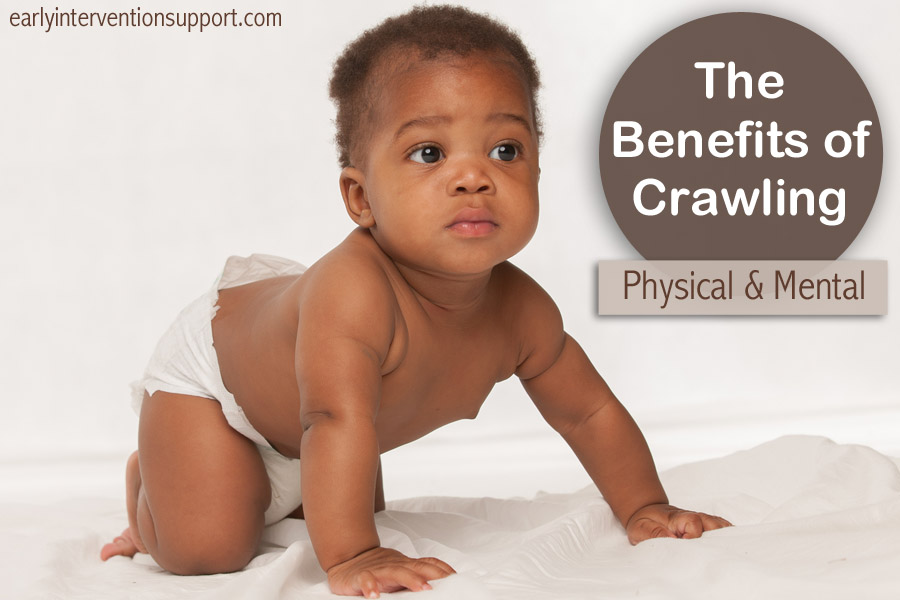The crawling stage of a child’s development has many benefits. These include increasing core musculature, overall strength and balance, and coordination in the upper and lower extremities. 1 Crawling allows a child to learn about where their body is in space, and how to navigate around obstacles so they can explore and play in their environment.2 It has also been shown that children who crawl on their hands and knees walk approximately 1 month earlier than those who skip crawling altogether.3
Research has shown that there are other benefits of crawling that are not limited to physical properties. An article by J. Herbert and others showed that over the first year of life crawling improved children’s memory retention, and allowed them to translate skills remembered from different activities.4
Crawling is an important skill in a child’s development. Along with the specific benefits noted above, it helps the child to be more independent, explore their environment, and gain new experiences so they continue to learn about the world.
By Amy J. Moore, DPT
References
- Campbell, Suzann K., and Robert J. Palisano. Physical therapy for children. 3rd ed. St. Louis, MO: Elsevier Saunders, 2006.
- McEwan M, Dihoff R, Brosvic G. Early infant crawling experience is reflected in later motor skill development. Perceptual and Motor Skills.1991;72:75-79.
- Storvold G, Aarethun K, Bratberg G. Age for onset of walking and prewalking strategies. Early Human Development. 2013; 89(9):655-659.
- Herbert J, Gross J, Hayne H. Crawling is associated with more flexible memory retrieval by 9-month-old infants. Developmental Science. 2007;10(2): 183-189.

